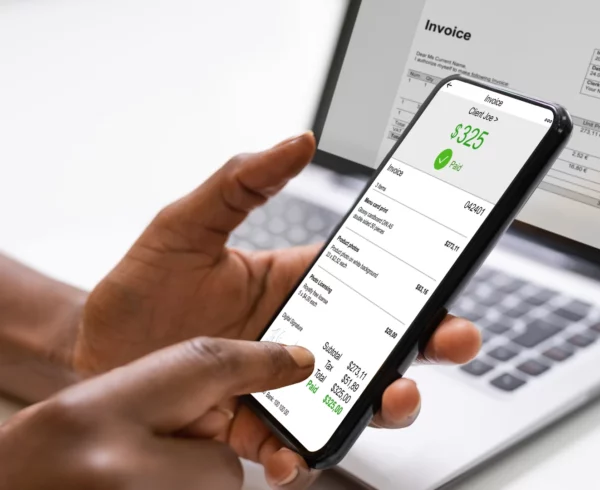Ask yourself how digitally developed your organization is. Do not worry if you don’t know the answer; you are not alone. Unfortunately, despite what many indices, scorecards, and self-assessments would lead you to believe, there’s no one measure of digital transformation. Instead, digital transformation is defined as adopting digital technologies to improve efficiency, value, or innovation. The concern is that measuring the success of digital transformation within a business isn’t straightforward. And without a standardized process to monitor Digitalization, companies risk watching their transformation efforts fall by the wayside, with question marks over the long-term viability of new processes, innovations, and technologies.
How to Choose KPIs When Measuring Digital Transformation
Measuring digital transformation requires an holistic business analysis and auditing approach. You’ll need to evaluate various factors to understand how rapidly your business is moving towards Digitalization. Choosing the appropriate KPIs is critical to driving technology adoption in the right areas.
Below, we evaluate key points when choosing the KPIs to steer your digital transformation measuring strategy.
Competition and External Market Conditions – what are your competitors focusing on, and what technological trends have emerged within your industry? Market conditions and competitor activity are critical drivers of digital adoption and will likely set the pace for how rapidly your business adopts new technology.
Internal Goals and Objectives – what are your short and long-term goals, and what digital technologies will you need to invest in to help get you there? Discuss business objectives with individual departments, acquiring a picture of what each function needs to boost its performance and efficiency.
The Technology Being Adopted – specific digital technologies require different methods of measuring and auditing than others. Therefore, prioritizing adoptions that have proved particularly costly or offer the most significant prospective benefits is crucial, particularly if you need to justify investment in expensive new tech to senior stakeholders or the board.
The Software or Platform You Will Use for Measuring Digitalization – effective measurement of Digitalization depends on the right software. The platform you choose will affect the insights and data you can gather from your measurement efforts, so think carefully about what you hope to gain from long-term digital adoption and select the proper measurement tool to help get you there.
Key Factors to Measure the Impact of Digital Transformation
Businesses can use metrics to define how well their digital transformation strategy is working and whether it needs to be adjusted or not. In addition, they serve as a way to track progress and get a feeling of how things are going. Unfortunately, according to Gartner, almost half of all organizations have not defined any Digital Transformation metrics. Here are some key metrics that can help companies achieve their digital transformation goals.
1. Active Users
Successful Digital Transformation needs the adoption of sustainable technology, one of the best KPIs to measure the active usage of your digital assets. You can do it by comparing the number of licenses purchased to the number of actual software users.
2. User Engagement & Active Usage
Focusing on end-user engagement and employee participation level can help you move ahead in your Digital Transformation journey. If employees aren’t engaging the way organizations to expect them to, it’s likely because the technology is not robust enough to make them shift from their existing work pattern. It doesn’t matter if your software is powerful and you have a well-planned Digital Transformation strategy; without employee engagement, all your efforts go in vain.
3. Productivity
One area every business hopes to optimize through technological investment is productivity. Adopting the right solutions can significantly boost productivity, output, and performance, going some way towards achieving your broader business goals and objectives. What’s more, measuring productivity is among the most straightforward metrics to utilize as part of your digital transformation measurement strategy. It’s based on a universal formula that equates to the value of output relative to the time and resources invested – or how much you’ve got from the amount you’ve put in.
To measure productivity, look at KPIs for a period, from total sales to website conversions. Then, compare this to figures before the digital adoption, giving you an insight into the productivity achieved.
4. Revenue
One of the most important metrics to consider as part of any digital transformation strategy – and the one board members of stakeholders will be most interested in – is revenue. Investors and senior managers want to see that new digital technologies bring tangible value to the business, and revenue is one of the leading indicators.
Analyzing revenue as part of a digital transformation measurement strategy happens in much the same way as productivity; you compare recent figures to those recorded before you brought the technology onboard. From there, it’s easy to see if a piece of technology contributes from a revenue standpoint, particularly concerning its initial purchase cost and long-term ROI.
Conclusion
Digital transformation is a powerful driver of business growth, but companies must measure its long-term effectiveness to ensure consistent ROI and usability.
At BHC, we’re specialists in helping brands leverage the right tools and platforms that can take their digital adoption to the next level. Contact us to learn more.








